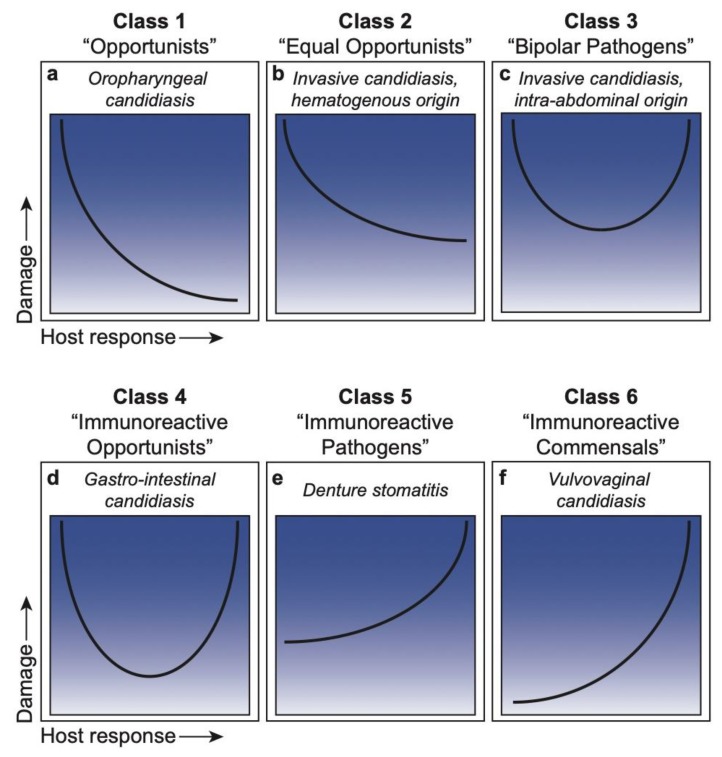Figure 1.
Damage-response framework curves for each class and associated Candida infections. (a) Class 1: ‘Opportunists’, or pathogens that cause damage only in the setting of weak host responses; represented by oropharyngeal candidiasis. (b) Class 2: ‘Equal Opportunists’, or pathogens that cause damage in hosts with weakened immune responses or in the setting or normal responses; represented by invasive candidiasis of hematogenous origin. (c) Class 3: ‘Bipolar Pathogens’, or pathogens that cause damage under appropriate immune responses, which is amplified at both ends of the immune spectrum; represented by invasive candidiasis of intra-abdominal origin. (d) Class 4: ‘Immunoreactive Opportunists’, or pathogens that cause damage primarily in the extremes of weak and strong host responses; represented by gastro-intestinal candidiasis. (e) Class 5: ‘Immunoreactive Pathogens’, or pathogens that cause damage across the spectrum of immune responses, with enhanced damage under strong host responses; represented by denture stomatitis. (f) Class 6: ‘Immunoreactive Commensals’, or pathogens that cause damage only under strong host responses; represented by vulvovaginal candidiasis.

